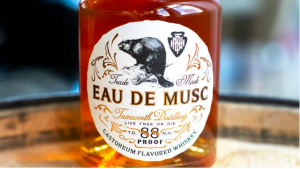I was a little late jumping onto the Instant Pot train, but now I really can't remember what I did without it! It is my absolute favorite tool in the kitchen. Pressure cooking made easy-as-pie (hmmm... I haven't tried making a pie in my pot yet...) The ease alone would be enough but Instant Pot takes it even further - a slow cooker, rice cooker, steamer, warmer and sauté pot, and that's just the 6-in-1 model. The 9-in-1 model also makes yogurt, cooks eggs, sterilizes AND makes cake. All this multi-tasking, no hogging my kitchen counter space - it's a keeper. So I've given my Instant Pot it's very own drawer, to store all its handy accessories. Here are my favorites.
TEMPERED GLASS LID
A clear glass lid is perfect for when slow cooking, sautéing, keeping food warm, or even serving direct from the pot.
Instant Pot Tempered Glass Lid
STAINLESS STEEL INNER COOKING POT
Having a second inner pot makes it really easy to prepare multiple dishes. I find it especially handy when I’m meal-prepping. I can make a main dish, and then quickly pop in a new inner and make quinoa, rice a veggie and such. It’s almost as handy as having two Instant Pots.
Instant Pot Inner Cooking Pot
SEALING RINGS
The Instant Pot lid sealing ring is made of silicone. It’s really durable and will last you a long time. It can, however, hold onto food odor. I wash mine in my dishwasher after each use. I also periodically “steam-clean” it in the pot - toss a couple cut up lemons and a cup of water into the pot and cook on manual high pressure for fifteen minutes. I do have a second ring to use when I make a neutral or sweet dish and I really want to ensure no savory aromas are transferred.
Instant Pot Sealing Rings
STACKABLE INSERT PANS
Stackable insert pans are great when you have more than one dish you can cook at once – steaming, cooking veggies and rice. Or cooking two dozen hard-boiled eggs at a time. These make reheat leftovers in the Instant Pot so easy and fast, a much better choice than using a microwave.
Stackable Stainless-steel Insert Pans
STEAMER BASKET
A steam basket or rack is essential for Instant Pot cooking. I especially like one with moveable sides so it can adjust and accommodate food of all shapes and sizes. I like the extendable removable handle on this XOX model, it’s handy when lifting hot food from the pot.
OXO Good Grips Stainless Steel Steamer with Handle
TRIVET-RACK-STAND
I use a taller trivet in addition to the trivet that comes with the Instant Pot, so I can cook in several layers. I’ll often cook things like sweet potatoes on the lower level and place an entrée in a pan above on the higher level. If you do this, take care that the height of the tallest item is not higher than the pot’s maximum fill line.
Trivet Rack Stand
HOT POT GRIPPER CLIP
Sort of like a hot pad’s much stronger studier weight-lifter cousin. Just clip the grip end onto the hot pot, or pan or basket and lift it from the Instant Pot. My friend Coleen, an Instant Pot veteran, gave me these when I first got my pot. She was absolutely right about how much I’d love them!
Hot Pot Gripper Clip
CHEESECAKE PAN
Perfect for cheesecake, tarts, quiches and more cheesecake. This pan was designed with Instant Pot cooking in mind, it has a handle for lowering into and lifting out of the pot. The only problem I have found with this pan is that it is too easy to make cheesecake. It's very tempting to have cheesecake every week. LOL
Stainless Steel Cheesecake Pan
YOGURT MAKER CUPS
My Instant Pot doesn’t have the Yogurt function (sad face) so this yogurt maker cup set is on my wishlist for now. When it’s time to give my pot an Instant Pot sister, it will be the yogurt-making 10-in-1 model.
COOKBOOKS: Now that I have an instant pot and love the versatility of this device I realized I needed a couple of cookbooks to help me find delicious recipes as well as instructions for standards like chili. Here are the ones I have: The Ultimate Instant Pot Cookbook and Dinner In An Instant
If you loved this list, be sure to check out my Favorite Kitchen Tools list. I've done the research so you don't have to!
Affiliate Disclosure: Recommendations I share on my website may contain affiliate links. If you click through my referral link, at no additional cost to you, I may earn a small commission if you make a purchase. I only recommend products and services I use myself and would share with friends and family. Your purchases from these companies through my links helps me continue to bring you free information on my site.



 Another specialty product that has historically used castoreum, and still does to this day, is a Swedish schnapps that is actually supposed to
Another specialty product that has historically used castoreum, and still does to this day, is a Swedish schnapps that is actually supposed to